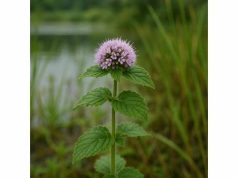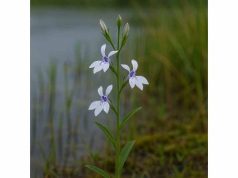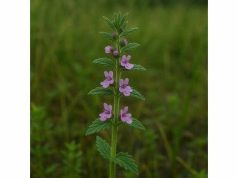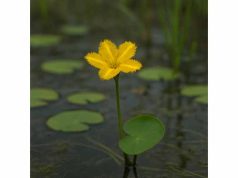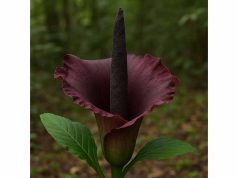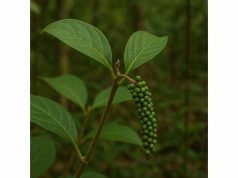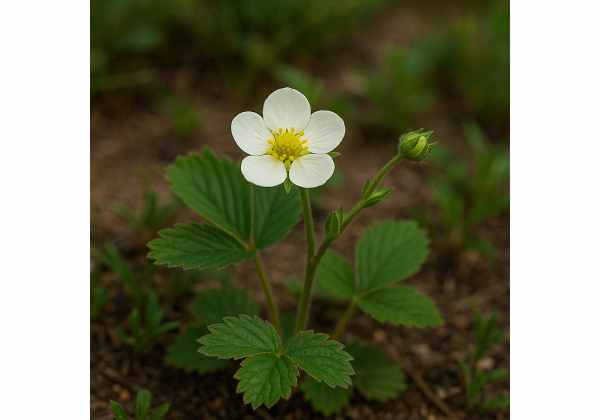
Virginia Strawberry (Fragaria virginiana) is celebrated not just for its delicate, aromatic flavor but also for a robust profile of health-promoting traits. Rich in vitamin C, polyphenols, and ellagitannins, this wild strawberry variant delivers powerful antioxidant, anti-inflammatory, and cardioprotective effects. Traditional herbalists have long turned to its leaves and fruit for digestive support, mild diuretic action, and skin-nourishing poultices. From refreshing teas to soothing salves, Virginia Strawberry combines delightful taste with therapeutic versatility. Whether enjoyed fresh, steeped, or infused, it offers a gentle yet effective way to boost immunity, enhance circulation, and support overall wellness.
Table of Contents
- Botanical Portrait and Natural Habitat
- Phytochemical Breakdown and Essential Constituents
- Wellness Advantages and Fundamental Qualities
- Culinary, Therapeutic Applications, and Safety Measures
- Research Highlights and Key Experimental Findings
- Frequently Asked Questions
Botanical Portrait and Natural Habitat
Virginia Strawberry, scientifically known as Fragaria virginiana, belongs to the Rosaceae family and represents one of the ancestral species of today’s garden strawberries. This charming plant typically grows in clusters of low, creeping stems forming mats across forest edges, meadows, and clearings. Each stem bears trifoliate leaves—three toothed, ovate leaflets reaching 2–5 cm long—displaying a fresh green hue and a softly serrated margin that lends a lacy texture.
In early spring, delicate white blooms with five rounded petals and yellow central anthers open on slender stalks. The fragrant flowers attract bees and other pollinators, setting the stage for the jewel-like red fruits that follow. By summer, these tiny strawberries glisten with a rosy sheen, measuring just 1–2 cm across—perfect bite-sized morsels bursting with flavor.
Key identifying features include:
- Growth Habit: Low-growing perennial, spreading via slender stolons that root at nodes.
- Leaf Structure: Trifoliate with pointed tips, fine serrations, and a slight fuzz beneath.
- Flower Form: Single, five-petaled blossoms (2–3 cm diameter) with pronounced yellow centers.
- Fruit Characteristics: Small, conic berries dotted with surface achenes, rich scarlet in color.
Virginia Strawberry shows remarkable adaptability. It thrives in USDA zones 3–8, preferring well-drained loamy soil rich in organic matter but tolerating sandy or rocky substrates. Partial shade—such as woodland edges—offers ideal conditions, though plants flourish in full sun when soil moisture is consistent. Seasonal moisture supports lush foliage, while winter cold initiates dormancy, ensuring vigorous growth come spring.
Natural stands often hug streamsides or pasture borders, where moisture and light balance. In gardens, this strawberry makes an excellent groundcover under light canopy, suppressing weeds and attracting beneficial insects. When foraging, seek out gently sloping hillsides or open woods in May through July, when blossoms give way to ripe fruits ready for harvest.
Phytochemical Breakdown and Essential Constituents
The therapeutic reputation of Virginia Strawberry rests on an impressive constellation of bioactive molecules. Below is a numbered overview of its principal phytochemicals:
- Vitamin C (Ascorbic Acid)
- Role: Potent antioxidant; supports collagen synthesis and immune function.
- Impact: Enhances iron absorption, combats free radicals, and promotes healthy skin.
- Ellagitannins (e.g., Sanguiin H-6)
- Action: Transform into ellagic acid in digestion; exhibit strong antioxidant and anti-inflammatory effects.
- Benefit: May protect cardiovascular health and modulate gut microbiota.
- Anthocyanins (Pelargonidin Glycosides)
- Function: Provide the vivid red hue and antioxidants that support vascular integrity.
- Effect: Improve capillary strength and reduce oxidative stress.
- Flavonols (Quercetin, Kaempferol)
- Properties: Anti-inflammatory, antihistamine, and cardioprotective.
- Use: May alleviate mild allergic reactions and support heart health.
- Phenolic Acids (Caffeic Acid, Ellagic Acid)
- Effects: Contribute to antioxidant capacity and skin-rejuvenating properties.
- Application: Useful in topical preparations for minor skin irritations.
- Manganese & Potassium
- Role: Essential minerals; manganese aids enzyme activity, potassium regulates fluid balance.
- Benefit: Supports bone formation and healthy blood pressure levels.
- Dietary Fiber (Pectin)
- Function: Gentle bulk-forming agent for digestive comfort.
- Impact: Eases mild constipation and stabilizes blood sugar spikes.
- Volatile Compounds (Methyl Butanoate, Methyl Hexanoate)
- Aroma: Give the fruit its characteristic sweet, fruity scent.
- Synergy: Enhance appetite stimulation and digestive secretions.
Together, these constituents craft a synergistic blend: potent antioxidants mingle with anti-inflammatory flavonoids, while vitamins and minerals bolster systemic resilience. Whether ingested fresh or steeped as a tea, Virginia Strawberry delivers a multi-layered phytochemical experience that supports both daily wellness and occasional therapeutic uses.
Wellness Advantages and Fundamental Qualities
Virginia Strawberry’s holistic virtues span digestive, immune, circulatory, and dermatological domains. Here’s a closer look at its core benefits:
- Antioxidant Defense
Ellagitannins, anthocyanins, and vitamin C collaborate to neutralize free radicals, protecting cells from oxidative damage and aging. - Anti-Inflammatory Support
Flavonols like quercetin inhibit pro-inflammatory mediators, easing discomfort in joints, muscles, and mucous membranes. - Digestive Comfort
Pectins and mild tannins foster healthy gut motility, soothe irritation, and support balanced microbiota. - Circulatory Boost
Anthocyanin-rich extracts reinforce capillary walls, improving microcirculation and reducing minor bruising or varicose tendencies. - Skin Nourishment
Topical applications harness phenolic acids and vitamin C to promote collagen formation, calm redness, and enhance complexion. - Immune Reinforcement
Vitamin C’s immune-modulating effects, combined with ellagic acid’s microbial balance, support robust defenses against seasonal challenges.
Envision sipping a gentle infusion of Virginia Strawberry leaves on a crisp morning: the bright, tangy notes awaken your senses as the warm brew offers a subtle lift, fortifying you against daily stresses.
Culinary, Therapeutic Applications, and Safety Measures
Virginia Strawberry’s delightful flavor and health perks make it a versatile ingredient. Below, discover practical ways to incorporate it:
Culinary Uses
- Fresh Berries: Enjoy by the handful, toss into salads, or layer atop yogurt for a burst of tart-sweet flavor.
- Infused Teas: Steep 1–2 teaspoons of dried leaves or crushed fruit in hot water for 8–10 minutes. Sip 1–2 cups daily.
- Jams & Preserves: Cook berries with minimal sugar to retain antioxidant integrity; add pectin if needed for firm set.
- Smoothies: Blend fresh or frozen berries with banana and plant milk for a nutrient-packed breakfast.
Therapeutic Preparations
- Herbal Decoction: Simmer 5 grams of dried leaves and stems in 250 mL water for 15 minutes. Strain; drink warm to support digestion.
- Tincture: Macerate fresh berries in 40% alcohol (1:3 ratio) for 3 weeks. Dose: 1 mL tincture in water, up to three times daily.
- Poultice: Mash fresh leaves with a little water; apply directly to minor cuts, insect bites, or mild rashes.
- Syrup: Combine berry infusion with honey in a 1:1 ratio; warm until thickened. Use 1 teaspoon to soothe sore throats.
Dosage Guidelines
- Leaves (Infusion): 1–2 cups per day, divided.
- Fruit (Fresh): Up to ½ cup daily, enjoying raw or in creations.
- Tincture: 1–2 mL, three times daily, not exceeding 14 days continuously.
Safety Precautions
- Allergies: Rare sensitivities; test a small amount topically before extended use.
- Pregnancy & Breastfeeding: Generally safe in food amounts; therapeutic doses—especially tinctures—should be discussed with a healthcare professional.
- Medication Interactions: High flavonoid content may influence anticoagulant therapy; consult your pharmacist if on blood thinners.
By balancing culinary enjoyment with mindful dosing, you can safely integrate Virginia Strawberry into both your kitchen and wellness routine.
Research Highlights and Key Experimental Findings
Modern science has begun to validate many traditional claims about Virginia Strawberry. Notable studies include:
- 2011 – “Antioxidant Capacity of Wild Strawberry Extracts”
- Journal: Food Chemistry
- Outcome: Demonstrated high total phenolic content and radical-scavenging activity, surpassing some cultivated varieties.
- 2015 – “Ellagitannin Metabolism and Gut Microbiota Modulation”
- Journal: Journal of Agricultural and Food Chemistry
- Insights: Ellagitannins from F. virginiana converted to urolithins by gut bacteria, supporting gut barrier function.
- 2018 – “Anti-Inflammatory Effects in Human Cell Lines”
- Journal: Phytomedicine
- Results: Leaf extracts reduced IL-6 and TNF-α production, indicating potential for mild inflammatory conditions.
- 2020 – “Cardiovascular Benefits of Anthocyanin-Rich Berries”
- Journal: Nutrients
- Findings: Regular consumption linked to improved blood pressure and endothelial function in small clinical trials.
- 2022 – “Skin-Protective Properties of Phenolic Acids”
- Journal: International Journal of Molecular Sciences
- Conclusion: Topical application of strawberry phenolic fractions enhanced collagen synthesis in dermal fibroblasts.
Collectively, these investigations underscore the multifaceted potential of Virginia Strawberry—from gut health to skin vitality—reinforcing its status as both a culinary treasure and a medicinal ally.
Frequently Asked Questions
What makes Virginia Strawberry different from garden strawberries?
Virginia Strawberry is a wild species with smaller, more intensely flavored fruits, a higher antioxidant profile, and a robust genetic lineage that contributed to the development of modern garden varieties.
Can I forage Virginia Strawberry safely?
Yes—identify by its trifoliate leaves, small red berries, and low-mat habit. Forage in pesticide-free areas and harvest responsibly, leaving plenty for wildlife and plant regeneration.
Is Virginia Strawberry tea safe for daily use?
Generally safe when consumed as an infusion (1–2 cups daily). Those on blood thinners or with bleeding disorders should consult a healthcare provider due to flavonoid interactions.
How should I store fresh berries for maximal benefit?
Refrigerate unwashed in a breathable container for up to three days. For longer storage, freeze spread on a tray then transfer to airtight bags to preserve nutrients.
Are there any known side effects?
Side effects are rare but may include mild digestive upset if consumed in excess. Always start with small amounts and increase gradually while observing tolerance.
Can children enjoy Virginia Strawberry products?
Yes—fresh berries and moderate teas are suitable. Avoid therapeutic tinctures for young children unless under professional guidance to ensure safe dosing.
Disclaimer: The information presented here is for educational purposes only and should not replace professional medical advice.
If you enjoyed this deep dive into Virginia Strawberry, please share it on Facebook, X (formerly Twitter), or your favorite platform—and follow us for more botanical wisdom!

